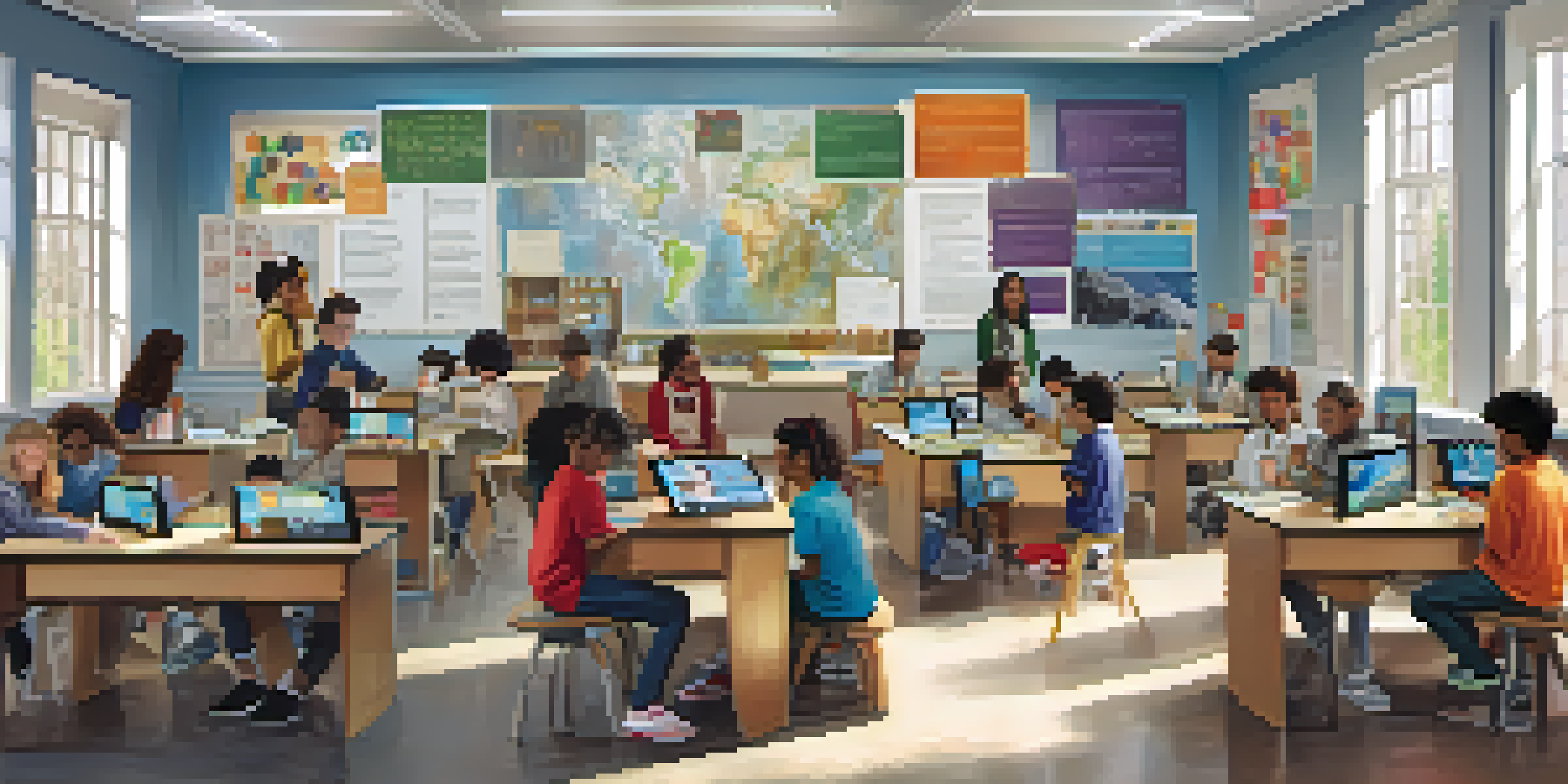Creating Inclusive STEM Classrooms for Diverse Learners

Understanding the Importance of Inclusivity in STEM
In today’s diverse society, creating inclusive STEM classrooms is essential. Inclusivity ensures that all students, regardless of their background, feel valued and empowered to participate. This approach not only enhances learning but also fosters innovation by bringing together different perspectives.
Diversity is not a reason for separation, but a reason for unity in innovation.
When students see themselves represented in the curriculum, it boosts their confidence and interest in STEM subjects. For example, showcasing scientists and engineers from various cultures can inspire students who may not have previously considered a career in these fields. Representation matters, and it plays a critical role in motivating diverse learners.
Moreover, inclusive environments encourage collaboration and teamwork, skills that are vital in STEM careers. By embracing different viewpoints and problem-solving approaches, classrooms can become vibrant hubs of creativity and exploration, benefitting all learners.
Recognizing Diverse Learning Needs in the Classroom
Every student comes with unique learning needs, influenced by factors such as culture, language proficiency, and learning styles. Recognizing these differences is the first step toward creating an inclusive classroom. Educators should assess their students' needs through surveys or informal discussions to tailor their teaching methods effectively.

For instance, some students may thrive with hands-on activities, while others may benefit from visual aids or collaborative projects. By diversifying teaching methods, educators can engage students more effectively and help them grasp complex STEM concepts. It's about finding the right mix that resonates with everyone.
Embrace Diversity in STEM Education
Creating inclusive STEM classrooms enhances learning by valuing diverse backgrounds and perspectives.
Creating a safe space for students to express their challenges fosters a sense of belonging. When students feel comfortable sharing their difficulties, teachers can better support them on their learning journey. Inclusivity thrives on understanding and addressing individual needs.
Implementing Culturally Relevant Curriculum
A culturally relevant curriculum is a cornerstone of inclusive STEM education. This means integrating examples, case studies, and projects that reflect the diverse backgrounds of students. By doing so, educators can make lessons more relatable and engaging.
Education is the most powerful weapon which you can use to change the world.
For example, when teaching about environmental science, incorporating local ecological issues can ignite students' interest and connection to the material. Highlighting contributions from scientists of various ethnicities in the curriculum also enriches learning and showcases the global nature of STEM fields.
Moreover, culturally relevant teaching not only benefits students from diverse backgrounds but also broadens the horizons of all learners. It encourages empathy and understanding, preparing students to work effectively in diverse teams in their future careers.
Utilizing Technology to Enhance Inclusivity
Technology can be a powerful ally in creating inclusive STEM classrooms. Tools such as educational software, online resources, and interactive platforms can cater to diverse learning needs. For instance, adaptive learning technologies can adjust content difficulty based on individual student performance.
Furthermore, online collaboration tools allow students to work together across different locations and backgrounds. This flexibility can be especially beneficial for students who may feel isolated in traditional classroom settings. Embracing technology opens up new avenues for engagement and learning.
Engage Families and Communities
Involving families and local organizations supports student learning and reinforces that STEM is for everyone.
It's essential, however, to ensure that all students have access to the necessary technology. Providing resources and training can bridge the digital divide, ensuring that every student has an equal opportunity to thrive in an inclusive STEM environment.
Encouraging Collaborative Learning Experiences
Collaborative learning is a powerful method for fostering inclusivity in STEM classrooms. By working in diverse groups, students can share their unique perspectives and skills, enhancing the learning experience for everyone. For example, a group project that combines art and engineering can allow students to leverage their strengths while learning from one another.
This approach not only builds teamwork skills but also promotes a sense of community among students. When learners collaborate, they develop empathy and communication skills, which are crucial in any STEM field. It also helps break down barriers, making it easier for students to support each other.
Moreover, collaborative activities can be structured to ensure that all voices are heard. Educators can implement roles within groups, ensuring that every student has a chance to contribute, which reinforces the value of each individual in the learning process.
Fostering a Growth Mindset in Students
Promoting a growth mindset is essential for creating an inclusive STEM classroom. This mindset encourages students to view challenges as opportunities for growth rather than obstacles. Educators can model this by sharing their own learning experiences and emphasizing that failure is often a stepping stone to success.
For instance, celebrating small victories and efforts, rather than just achievements, can motivate students to persist in their studies. When students understand that their abilities can improve with effort and practice, they become more resilient learners, willing to take risks.
Continuous Educator Development
Ongoing training for teachers is essential to implement effective inclusive practices and improve student outcomes.
Additionally, incorporating self-reflection activities can help students recognize their progress and set personal goals. This focus on growth empowers all learners, especially those who may feel marginalized, reinforcing the idea that everyone can succeed in STEM.
Involving Families and Communities in STEM Education
Engaging families and communities is crucial for nurturing an inclusive STEM learning environment. When families are involved, students feel supported both at home and in school, which can enhance their academic outcomes. Schools can host STEM nights or workshops that invite families to participate in hands-on activities together.
Furthermore, building partnerships with local organizations can provide additional resources and opportunities for students. For example, inviting local scientists to speak at schools can inspire students and show them the real-world applications of STEM education. Community involvement helps bridge the gap between classroom learning and real-life experiences.

Creating a network of support around students not only boosts their confidence but also reinforces the idea that STEM is for everyone. When students see their families and communities engaged in STEM, it fosters a collective commitment to learning and discovery.
Continuous Professional Development for Educators
For inclusive STEM classrooms to thrive, continuous professional development for educators is essential. Teachers need ongoing training to stay informed about the best practices and strategies for engaging diverse learners. Workshops, conferences, and online courses can provide valuable insights into inclusive teaching methods.
Additionally, sharing experiences and resources among educators can foster a collaborative learning community. Teachers can benefit from one another's successes and challenges, which can inspire new approaches in their classrooms. Peer support is invaluable in navigating the complexities of diverse learning environments.
Ultimately, investing in educators' growth not only enhances their teaching skills but also positively impacts student learning outcomes. Well-prepared teachers are better equipped to create inclusive and engaging STEM classrooms for all learners.